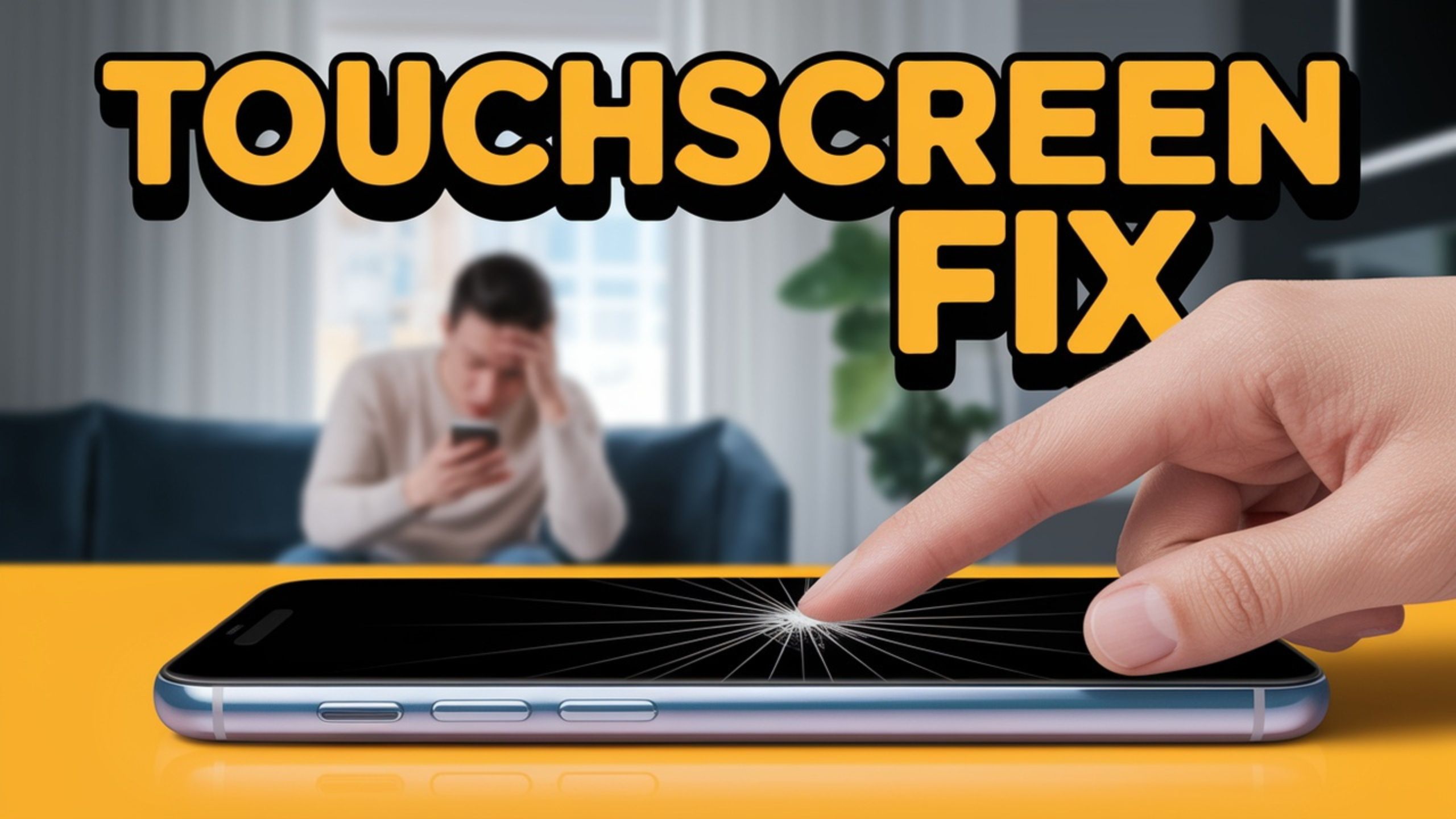Is your Samsung Galaxy touchscreen acting up after a recent software update? You’re not alone. Many Samsung users have reported issues like touchscreen unresponsiveness, delayed taps, or apps that stop responding. It’s frustrating, mainly when your phone worked perfectly before the update. This article will walk you through proven solutions to fix your touchscreen issues. From simple settings tweaks to in-depth troubleshooting, we’ve covered you with step-by-step methods that work on most Galaxy models, including the Galaxy S, Note, A, and Z series.
Why Does Touchscreen Unresponsiveness Happen After an Update?
A system update is meant to improve your device, but sometimes, it introduces software bugs or incompatibilities with existing settings or apps. Here are some of the most common causes of touchscreen issues after a software update:
- Glitchy firmware or system bugs
- Conflicting third-party apps
- Corrupted cache files
- Screen calibration mismatches
- Low memory or background process overload
- Hardware stress triggered by software changes
Understanding the root cause helps you choose the correct fix, so let’s dive into the most effective solutions.
1. Restart Your Samsung Galaxy
A simple restart can often restore your touchscreen’s responsiveness.
How to restart:
- Press and hold the Power and Volume Down buttons for about 10 seconds.
- Select Restart from the menu that appears.
- Wait for the phone to reboot and test your touchscreen again.
A restart clears temporary system glitches that may be affecting the touchscreen.
✈️ 2. Try the Airplane Mode Toggle Trick
Several users have found that toggling Airplane Mode helps temporarily fix unresponsive touchscreen behavior.
Steps:
- Swipe down to open the Quick Settings menu.
- Tap Airplane Mode to enable it.
- Wait 5–10 seconds, then turn it off.
This forces the system to refresh network-related services and can “wake up” the touchscreen, especially when only certain apps or screen parts are affected.
3. Wipe Cache Partition in Recovery Mode
After an update, some temporary files may become corrupted and cause your phone to lag or freeze. Wiping the cache partition is a safe and effective fix that doesn’t delete your data.
To do this:
- Turn off your device.
- Press and hold the Power, Volume Up, and Bixby (if available) buttons together.
- When the Samsung logo appears, all buttons are released.
- Use the volume buttons to navigate to Wipe Cache Partition.
- Press the Power button to select it.
- Confirm and then reboot your device.
Doing this clears out junk files that may be messing with touchscreen responsiveness.
4. Boot Into Safe Mode to Check for Faulty Apps
Some third-party apps can cause serious conflicts with system-level functions after an update. Safe Mode turns off all non-essential apps so you can test if one of them is the culprit.
How to enter Safe Mode:
- Press and hold the Power button.
- Tap and hold Power Off until Safe Mode appears.
- Tap again to enter Safe Mode.
If your touchscreen works fine in Safe Mode, the issue is almost certainly due to a third-party app. Try removing recently installed or updated apps until the problem disappears.
5. Check for Touchscreen Firmware Updates
Occasionally, Samsung pushes out separate updates for hardware components like the touchscreen. These don’t always show up with regular system updates.
Steps:
- Open Settings > Software update > Download and install.
- If available, install any pending updates.
- You can also try Galaxy Store > Menu > Updates to check for firmware patches from Samsung directly.
Updating your firmware can fix touch-related bugs introduced in the main OS update.
6. Use the Samsung Members App for Diagnostics
Samsung includes a powerful diagnostics tool inside the Samsung Members app. This app can test your screen’s hardware and suggest potential fixes.
Steps:
- Open the Samsung Members app.
- Tap Get Help > Diagnostics.
- Choose Touch Screen from the list of tests.
If the test fails or reports lag, follow the recommendations or contact Samsung support directly.
7. Perform a Factory Reset (as a Last Resort)
If none of the previous methods work, a factory reset may be your only option. This removes all data, apps, and settings and returns your phone to its factory state, eliminating conflicts or corruption.
Warning: This will erase all personal data. Back up your device first.
Steps:
- Go to Settings > General management > Reset > Factory data reset.
- Follow the prompts to confirm.
- Once the reset is complete, set up your phone again and test the touchscreen.
Only do this if the screen remains unresponsive despite all other efforts.
⚙️ 8. Calibrate the Touchscreen (Indirectly)
Samsung devices don’t offer a direct touchscreen calibration option, but you can use diagnostic tests to “nudge” the system into recognizing touch patterns better.
Try this workaround:
- Use apps like Touchscreen Repair from the Play Store.
- Or repeatedly use the Samsung Members Diagnostic tool multiple times to force recalibration.
These can retrain the system to better recognize touch input in cases where misalignment is the issue.
9. Disable Battery Optimization for Critical Apps
Sometimes, battery optimization settings may restrict background processes needed by certain apps to respond to touch correctly.
Steps:
- Go to Settings > Battery and Device Care> Battery.
- Tap Background usage limits.
- Disable restrictions for key apps affected by the issue.
- Alternatively, open App Info > Battery > select Unrestricted.
This helps apps function properly, especially after system updates that reset battery management.
️ 10. Contact Samsung Support or Visit a Service Center
If you’ve tried every fix and the screen is still freezing or not registering touches, the issue could be hardware-related, possibly triggered or exposed by the recent update.
Samsung’s official support can offer:
- Remote diagnosis
- Software repair tools
- Free in-warranty service (if eligible)
Find a nearby Samsung Authorized Service Center or book an appointment using the Samsung Members app.
✅ Final Thoughts: Fixing Samsung Galaxy Touchscreen After an Update
Touchscreen issues after a software update are more common than most users realize. While glitches, buggy apps, or conflicting settings are often to blame, the good news is that, in most cases, they can be fixed without needing professional repair.
By following the steps above — from toggling Airplane Mode to wiping the cache or entering Safe Mode — you can restore your phone’s responsiveness and enjoy a smoother user experience.
Don’t ignore minor touch delays — small issues can become bigger frustrations. Act quickly, use the built-in tools Samsung provides, and if needed, get expert help.
Ask Follow-up Question from this topic With Google Gemini: How to Fix Unresponsive Touchscreen on Samsung Galaxy After Update?

Selva Ganesh is the Chief Editor of this blog. A Computer Science Engineer by qualification, he is an experienced Android Developer and a professional blogger with over 10 years of industry expertise. He has completed multiple courses under the Google News Initiative, further strengthening his skills in digital journalism and content accuracy. Selva also runs Android Infotech, a widely recognized platform known for providing in-depth, solution-oriented articles that help users around the globe resolve their Android-related issues.




Samsung should really fix this in the next patch.
Just updated and this happened—glad I found this guide.
Is this a known issue with the April update?
A factory reset fixed mine but I lost a lot of data.
Thanks! I thought my phone was completely dead.
Didn’t know about the recovery mode method—super helpful.
Safe Mode tip saved me. Thank you so much.
Touchscreen started responding after I cleared the cache.
Worked like a charm. Appreciate the help!
Still having problems even after trying these steps.
I had to restart twice but it eventually fixed the issue.
This solution actually worked for me, thanks!